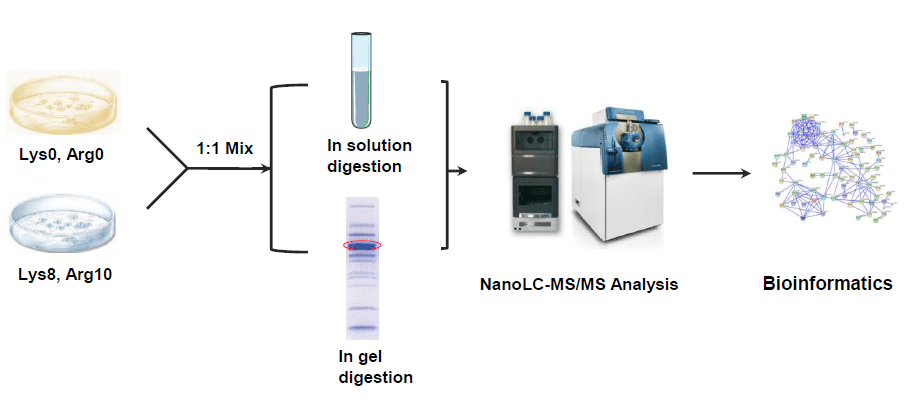Histone Post-Translational Modification Analysis Service
Histones are highly conserved proteins, and histone subtypes have highly similar amino acid sequence. The N-terminal ends of histones can be modified by several types of PTMs, including acetylation, methylation, phosphorylation and so on, which affect the DNA transcription, replication, and DNA condensation, etc. Therefore, analysis on histone N-terminal modifications can provide valuable information for epigenetic studies. MtoZ Biolabs has optimized our sample preparation protocols to obtain highly purified histones with the least effect to the modification. We also use 2-3 enzymes for protein digestion to ensure full coverage analysis of histone sequence, eliminating any missing information of short peptides rendered by using only one enzyme.
MtoZ Biolabs has developed a specialized platform, equipped with Q Exactive HF (Thermo Fisher), Orbitrap Fusion, and Orbitrap Fusion Lumos mass spectrometers, equipped with Nano-LC for histone modification analysis service. To better solve your research problems, we offer an all-inclusive service, including sample preparation, protein purification, digestion, peptide separation, LC-MS/MS analysis, histone modification analysis and bioinformatics analysis. All you need to do is to tell us your project objective, and send us your cell samples, and we will complete all the following experiments.
Analysis Workflow

Sample Submission Requirements

*Note: We will perform testing experiment before we start official experiments. To ensure the most cost-effective and accurate analysis is provided, only qualified samples will proceed to the official analysis.
Deliverables
1. Experiment Procedures
2. Parameters of Liquid Chromatography and Mass Spectrometer
3. MS Raw Data Files
4. Peptide Identifications and Intensities
5. Protein Identifications and PTMs Mapping
6. Bioinformatics Analysis
Related Services
Phospho Proteomics
Acetyl Proteomics
Ubiquitin Proteomics
Glyco Proteomics
Disulfide Bond
Histone Modifications
Protein Identification
Protein Mass Measurement
PTMs Identification
Protein De Novo Seq
N-Terminal Sequencing
C-Terminal Sequencing
Edman Degradation
Protein Full-Length Sequencing
How to order?







